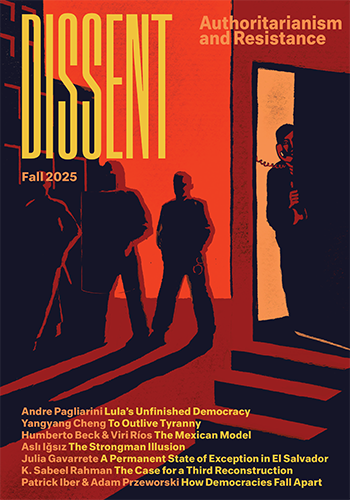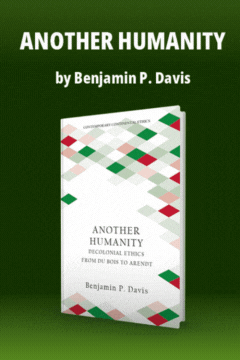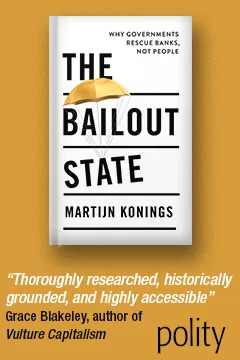Inequality > Charity Dinners
Inequality > Charity Dinners
From the Gilded Age to the new Gilded Age, the lesson stays the same: charity is no solution to poverty and inequality.

Spectacular, feel-good charity events that appear to bring people together are a staple of the holiday season. At the end of November, St. Bart’s Church on Park Avenue in midtown Manhattan hosted just such an event, aimed at creating understanding between rich and poor New Yorkers while battling hunger and homelessness.
Under chandelier lights and stained-glass windows, the church provided a sumptuous sit-down meal to over 200 homeless New Yorkers. Joining them, at $100 a plate, were nearly 170 wealthy donors who enjoyed “a safe environment to meet those who benefit from their charitable instincts.” St. Bart’s Rev. Edward Sunderland accounted the dinner a “smashing success,” and hopes that such events “will become a nationwide trend.”
Actually, they already are a trend. A long one.
On Christmas Day, 1899, the Salvation Army hosted a similar dinner for New York’s poor in Madison Square Garden, on a much larger scale. Thousands of struggling New Yorkers gathered on the arena floor, sitting in rows, feasting on roast suckling pig, and sipping piping hot coffee. Gazing from the mezzanine, meanwhile, as the New-York Tribune reported, sat “thousands of well-fed and prosperous people, among them many women who had come in carriages and were gorgeously gowned and wore many diamonds.” They had paid a dollar each for admission.
A few rich New Yorkers even descended from the gallery to circulate among the guests, dispensing further charity and enjoying the frisson of more intimate contact with the destitute. “It is a beautiful, a never-to-be-forgotten sight,” one declared. Frederick Booth-Tucker, the Commander of the Salvation Army’s U.S. branch, agreed. In an era of expanding inequality, he said, events such as the Christmas Dinner were “bridging the gulf between the rich and the poor.”
Thirty years later, in 1929, that gulf yawned wider than ever. Today, we are experiencing levels of inequality unseen since.
The imperative to give charity at the holidays is in our blood, reinforced by ritual, legend, and grade-school lessons about Native Americans saving starving Pilgrims, or Scrooge relenting for the sake of Tiny Tim. At a time of year when all celebrate bounty and family, it may seem ungenerous to question those doing their best to provide a share to the afflicted. Certainly, everyone should give as the spirit moves.
But they should do so without mistaking holiday spirit for a realistic solution to poverty and inequality. If history is any guide, private charity will never suffice to meet basic needs in America.
This proved literally true on December 25, 1899. As the New York Times reported from Madison Square Garden, “after all this multitude had been fed and the tremendous stores of provisions had been exhausted to the last morsel, there still remained thousands of hungry mouths unfed, and men, women, and children were perforce turned back into the streets, hungry, friendless, and cold.”
More tellingly, even some who had gained admission to the dinner appeared unsatisfied. A few of those hardscrabble New Yorkers, hoping to reap more than the Salvation Army had sown, took donated chickens and established an impromptu poultry market on the street outside the arena. For this collective act of entrepreneurship, the police dispersed them and the press called them ungrateful.
“When the food was passed we all became equal,” remarked Rev. Sunderland at St. Bart’s this November, echoing his predecessor a century prior. But as the donors strolled homeward along Park Avenue, that figment of equality dissolved. Their erstwhile dinner companions found themselves back on the street, facing the same conditions that awaited their forebears: police harassment, inadequate shelter, and insufficient nourishment in a city and nation that demand their gratitude for charity during the holidays, and their invisibility the rest of the year.
In the twentieth century, reducing poverty and inequality required robustly enforced legal protections for collective action and a comprehensive social safety net provided by government at every level. The more these policies come under attack, the less anyone should take comfort in spectacles of holiday charity.
Homelessness in New York has reached historic highs. Hunger remains unabated since the start of the recession in 2008, and recent cuts to the Supplemental Nutrition Assistance Program have only made things worse. Inequality has grown more acute than at any time since before the Great Depression. If, as Frederick Booth-Tucker put it in 1899, we actually want to bridge “the gulf between the rich and the poor” for the sake of our future, perhaps we might begin by listening more closely to the echoes of the past.
David Huyssen teaches U.S. history at New York University and is the author ofProgressive Inequality: Rich and Poor in New York, 1890-1920.






